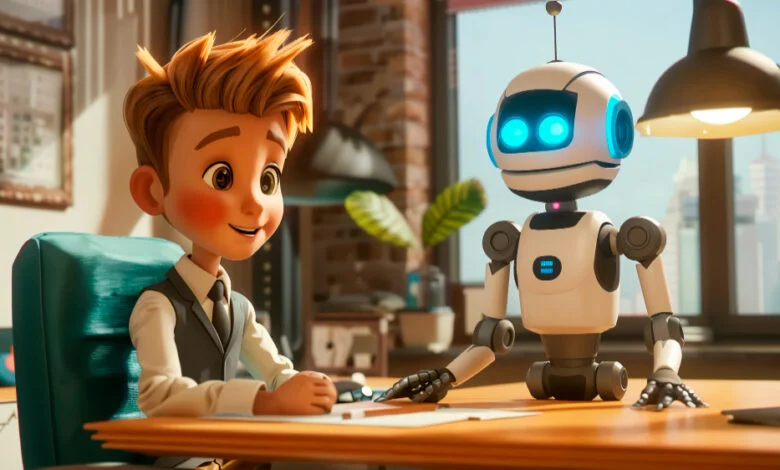Robots have revolutionized various aspects of human life, from industrial automation to personal assistance. The term Robots Dot to Dot Nattapong refers to the growing curiosity around robotics, innovation, and technological advancements that continue to shape our world. This blog will explore different types of robots, their applications, and the future of robotics while shedding light on how they influence our daily lives.
What Are Robots?
Robots are programmable machines designed to perform tasks autonomously or with minimal human intervention. They range from simple mechanical arms used in factories to complex humanoid robots capable of mimicking human expressions and actions. Robotics combines multiple fields such as artificial intelligence, machine learning, electronics, and mechanical engineering to create machines that enhance productivity and efficiency.
Types of Robots
There are various types of robots, each designed for specific purposes. Here are some common categories:
1. Industrial Robots
Industrial robots are widely used in manufacturing and assembly lines. These robots help automate repetitive tasks such as welding, painting, and packaging. They increase efficiency and reduce human error in production processes.
2. Service Robots
Service robots assist humans in tasks such as cleaning, healthcare, and customer service. Examples include robotic vacuum cleaners, automated hospital assistants, and AI-powered chatbots in customer support.
3. Humanoid Robots
Humanoid robots resemble humans in appearance and behavior. They are used in entertainment, education, and research. Some advanced humanoid robots can interact with people using natural language processing and artificial intelligence.
4. Medical Robots
Medical robots play a crucial role in modern healthcare. Robotic-assisted surgeries, robotic prosthetics, and automated drug dispensers improve medical precision and patient care.
5. Military and Defense Robots
Robots are extensively used in military applications, including surveillance, bomb disposal, and unmanned aerial vehicles (UAVs). These robots reduce risks for soldiers and enhance defense capabilities.
6. Autonomous Vehicles
Self-driving cars and drones are examples of autonomous robots that use artificial intelligence to navigate without human control. They are transforming transportation and logistics.
How Robots Are Changing Everyday Life
The presence of robots in daily life is increasing as technology advances. Here are some key areas where robots have a significant impact:
1. Household Assistance
Robotic vacuum cleaners, lawnmowers, and smart home assistants like voice-controlled AI devices make everyday tasks easier. These robots save time and effort while improving convenience.
2. Healthcare Advancements
Medical robots assist in surgeries, patient monitoring, and drug administration. Robotic exoskeletons help disabled individuals regain mobility, while AI-powered diagnostics improve healthcare efficiency.
3. Education and Learning
Educational robots help students learn coding, problem-solving, and engineering concepts interactively. These robots enhance STEM education and encourage innovation among young learners.
4. Entertainment and Gaming
Robots are used in movies, theme parks, and interactive toys. Robotic pets provide companionship, and AI-driven gaming characters enhance immersive experiences in virtual environments.
5. Workplace Automation
Many businesses use robots for data analysis, customer support, and security surveillance. AI-driven robots streamline workflow and increase productivity in various industries.
The Future of Robotics
Robotics continues to evolve, bringing new possibilities and challenges. Innovations in artificial intelligence, machine learning, and human-robot interaction are shaping the future of robotics.
Emerging Trends in Robotics
1. AI-Powered Robots
Artificial intelligence enhances the cognitive abilities of robots, allowing them to learn, adapt, and perform complex tasks with minimal supervision.
2. Collaborative Robots (Cobots)
Cobots work alongside humans, assisting in tasks that require precision and efficiency. They are designed to be safe and user-friendly.
3. Soft Robotics
Soft robotics involves the creation of robots using flexible materials, enabling them to interact more safely with humans and delicate objects.
4. Swarm Robotics
Inspired by nature, swarm robotics involves multiple robots working together to complete tasks collectively. This technology is used in search and rescue missions, agriculture, and logistics.
5. Quantum Robotics
Quantum computing is expected to revolutionize robotics by enabling robots to process vast amounts of data at unprecedented speeds.
Ethical and Social Implications of Robotics
As robots become more integrated into society, ethical concerns arise. Some key issues include:
1. Job Displacement
Automation and robotics may replace human jobs, leading to economic and social challenges. It is crucial to find a balance between automation and employment opportunities.
2. Privacy and Security
AI-powered robots collect and process vast amounts of data, raising concerns about privacy and data security. Proper regulations are needed to protect user information.
3. Ethical AI Development
Ensuring that AI-driven robots operate ethically and without bias is essential to prevent unintended consequences. Developers must prioritize transparency and accountability.
4. Human-Robot Relationships
As robots become more interactive, questions about human-robot relationships arise. It is important to define the boundaries between human emotions and robotic assistance.
Conclusion
The concept of Robots Dot to Dot Nattapong highlights the ever-growing interest in robotics and its impact on various industries. From household assistance to healthcare and education, robots are transforming how we live and work. While robotics brings numerous benefits, it also presents ethical challenges that must be addressed responsibly. As technology advances, the future of robotics promises innovation, efficiency, and new possibilities for a smarter world.


